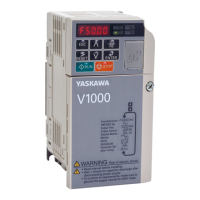2,8.23.4 Variables (Cent’d)
Main Program
1’
G65 P9201
A.. .B. .. C,* ;
Single-level Macro
———————
09201 ;
“ #1, #2, #3
G65 P9205
~
Double-level Macro
~.
09205 ;
#i
#2
#3
o
Argument
eadlwrite
Designation
Enabled
#l =...
\“\
#l =...
I
Local variable area
for single-level macro
Hence, the variables #1, #2, #3, , . . of the
same macro assume different values each time it
is called.
Each local variable is reset for each
macro call and is registered by argument desig-
nation. The variable not designated becomes
“blank. “ Each local variable is set to “blank”
at the time of power-on and reset operations.
(2) Common Variables ( #100 through #149, #500
throuth #549)
A common variable may be shared by all macros
and through all macros of all nesting levels. That
is, the common variable enables a macro to refer
to the result’s obtained by another macro.
Common Variable Area
oJIoKIJ’\oK
Single-nest Double-nest Tripple-nest Quadruple-
Macro
Macro Macro
nest Macro
Common variables are divided into the following
two types depending on clear conditions:
o-
Read /write
Enabled
w
Local variable area
for duplicate-level macro
#149: These common variables
a. #100 through
are cleared at the time of power-on and reset
operations and are set to IIblank. !1
In some con-
trols, they are not cleared by reset operation if
parameter #6008Dl is set at 1.
b.
#500 through #549:
These common variables
are not cleared at the time of powe-on and reset
operations.
The common variables are available to the
user without restrictions.
They cannot be
designated by arguments. Indirectly, however,
they can be designated as follows:
‘Argument Designation of #1
(3) System Variables
A system variable is the one whose use is unique
to the system.
There are following types of sys-
tem variables:
a. Interface input signals . . . #1000 through
#1015, #1032T
b. Interface output signals . . . #1 100 through
#1115, #1132.~

